BLOG
Weekends filled with Walleye in Canada!!! –André Gervais
Yo-Zuri hardbaits are the staple in every one of my tackle boxes. But, I especially rely on them when chasing after the big walleyes that we are notorious for in Canada. I really enjoy walleye fishing on the weekend because there are no two trips the same, and the walleye are very aggressive fish. It is always a great opportunity to hit the water and spend time with great fishing buddies and family.
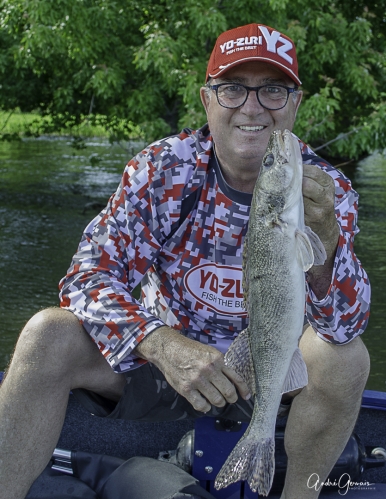
For most of my life I have known the best way to catch walleye is by trolling. This is a pretty simple technique done by boat: tie on a Yo-Zuri Crystal Minnow Walleye DD, throw the bait behind the boat and drive at a steady slow pace. A critical element to being successful and a common question I hear a lot is, “what speed should I troll at?” this is dependent on the bait you are throwing and the depths you want to target. For me I prefer a really slow speed to help the Yo-Zuri Crystal Minnow Walleye DD dive to a depth of 8-9 feet. This seems to be a perfect depth for this bait because it allows the bait to “dance”. When I say dance, I mean the bait is at a wide side-to-side wobbling action and is hunting!
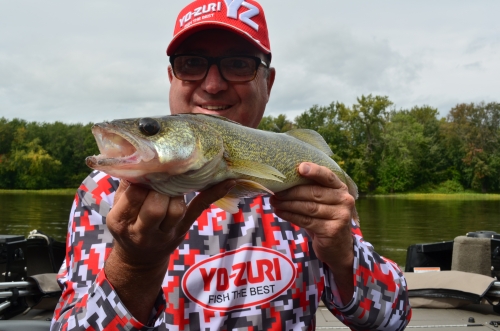
The rod and reel is really not too much of a concern to me, but I have found that line is very important; remember you are dealing with tooth critters. For me if I am fishing open water I will run straight 14-20lb Yo-Zuri TopKnot Mainline 100% Fluorocarbon. The small the line the deeper depths the bait will go. However, if I am targeting areas that have a lot grass or I am running multiple rods behind the boat I will usually run 30lb Green SuperBraid with fluorocarbon leaders. The braid helps stay more abrasion resistant in the grass.
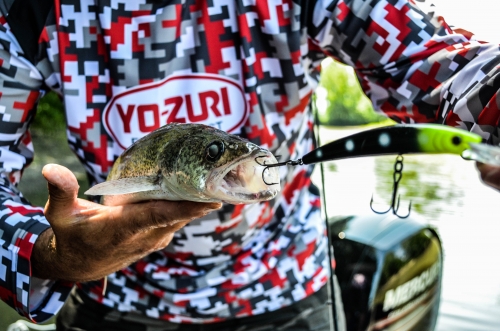
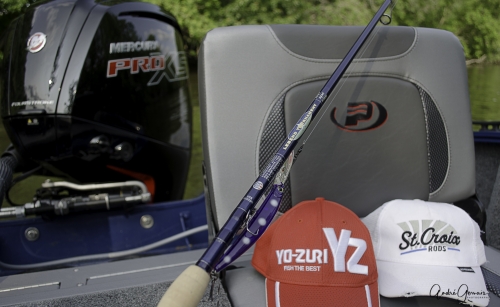
Finally the bait of choice, as I mentioned I throw the Yo-Zuri Crystal Minnow Walleye DD most of the time. This is a great bait because it dives really well, has a great action, and the colors are exactly what walleye target. Walleye prefer the really dark or the really bright colors. They are a weird fish when it comes to the color selection and resemble nothing of the natural forage. The colors I like the most are Zombie and Midnight, but will sometimes mix it up with Acid Perch and Hot Tiger. All of the colors offered by Yo-Zuri however are a great choice; these are just the ones I reach for most.
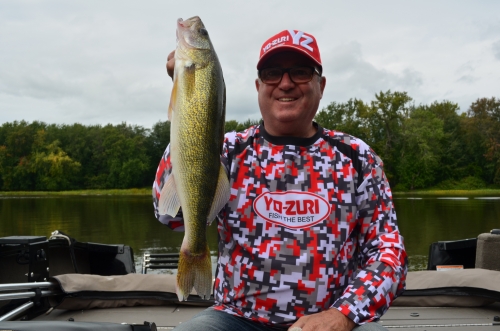
Enjoy the waters and don’t forget to bring home fresh walleye for dinner, as walleye are one of the best freshwater eating fish there is!
Take your Grandkids fishing with the Yo-Zuri Snap Bean – by Martha Goodfellow
Recently, I was blessed to have our two youngest grandkids come for a visit (ages five and three). They each had a week of their own, for what we teased was “Camp at the Grandparents.” One of our adventures was to go fishing at a friend’s pond. You should have seen the total delight and excitement on each of their faces as they caught one bream after another.
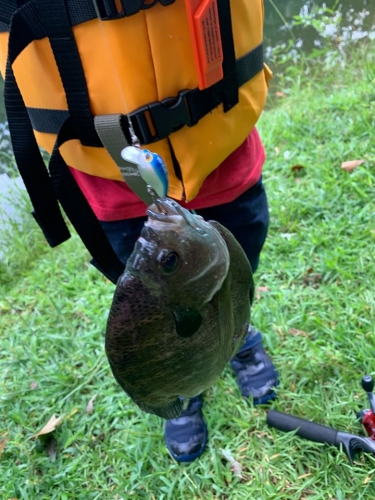
Each child had their own favorite pole and since they were the kid of the week, they could choose from several kid rods. Our grandson’s favorite was his kid spider-man pole. That pole was rigged with a Yo-Zuri Snap Bean in the silver/black back lure. Another had a silver/blue back Snap Bean. And, to mix it up a bit, we had one rigged with a plastic lure. Hands down, our five year old grandson loved using the Snap Bean. Instead of patiently waiting for a fish to find the plastic, he could slowly retrieve the Snap Bean and it kept his interest. Of course kids all have their own personalities and our 3 year old granddaughter loved using brother’s spider-man pole since he wasn’t there. J We rotated through using the Snap Bean and a plastic bait.
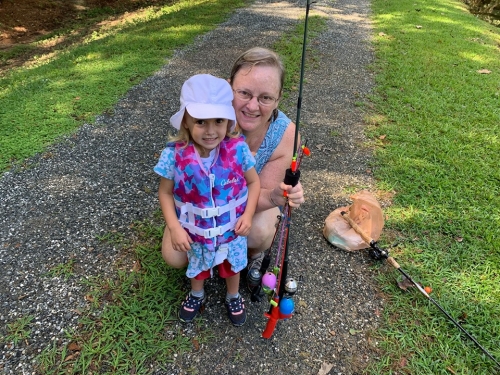
The Snap Bean worked great for the kids. Since it is a shallow diving crankbait, it stays close to the surface. The Snap Bean only weighs 1/16 oz and has one treble hook. To use on the kids poles and make it easier to get longer casts, I put a weighted bobber on the line above the lure. Using a bobber also helped the kids watch for when a fish was “playing” with their bait and for when they had a fish on.
Summer Calicos in Cali with Yo-Zuri- by Jonathan Lobaugh
Summer time is finally here in SoCal the calico bass are fired up and are in full spawn effect! Now, the only difference is calico bass are highly aggressive in spawn unlike largemouth bass where you need to entice that bite. Calicos are not like that all, find those conditions and throw only two baits! Lately my choice of poison is the Crystal Minnow 130 in many color ways however the peanut bunker has been the most deadly. The Hydro Minnow LC is also another great choice of bait. Giving its great action and tight wobble action, calicos cannot resist.
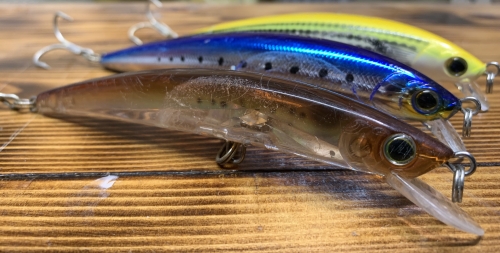
I have tried many different ways to fish these two baits and I have found that the swim with the best action when you fish a clip or straight to 25lb -30lb HD Carbon, it really all depends on your preference. I typically like fishing this bait on a conventional set up with a 7’5” heavy action rod and over-sized Shimano bait casting reel. The crystal minnow has proven to me to be the best search bait when hunting for calico bass with its incredible action and the ability to dive to 5ft deep giving it an advantage as it can run under kelp canopy’s and get down closer to the reefs when fishing up tight in the skinny water. Pick one up of each, crystal minnow, and hydro minnow.
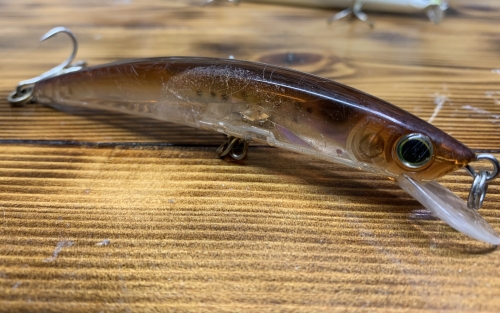
People often ask me when I choose one over the other, the truth is let the fish tell you which one they want. I have had days where I really do well on the LC Minnow and then other days that when throwing the 130 Crystal Minnow they are ripping the rod out of my hands. The key is to match the color patterns to the bait, finding the bait, and from there you should be able to locate the aggressive calicos. Once they are actively feeding near the boat you can cast your bait bait to them. Many people believe you have to troll for calicos, that is not the case at all. In some instances the big ones will be right up against the boiler rocks that are being hit by the swell. It’s always worth getting as close as is safe and lobbing some casts into that swell zone.

Downsizing Presentation for Mega Results in PA- by Rese McGaughey
Pennsylvania is known for a lot of things: cheese steaks, America’s independence, craft beer, and the Eagles. But did you know they are also known for world classic trout and walleye fishing? Wait what…….trout and walleye fishing? Absolutely! Now to keep your optimism alive, let us explain what we are talking about here.

Rese McGaughey has been on the Yo-Zuri Prostaff for a little over a year now. He is also a native to PA and knows a thing or two around the streams and rivers there to catch some of the biggest Trout, Largemouth Bass, and Walleye. Not only is he catching them, he is catching “megas”. Looking at Rese takes you a step back in time to what the old moonshiners looked like running in the mountains of the smokies; but no, he is not a relation to Popcorn Sutton. Don’t let the awesome red beard fool you, this guy knows what he is doing.
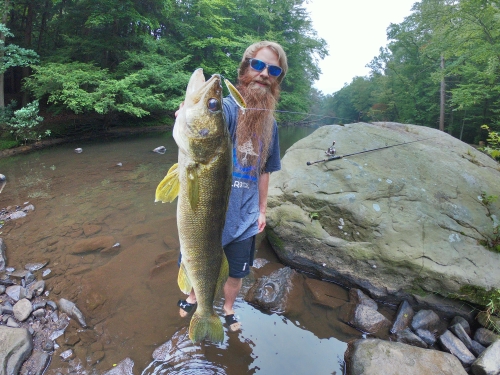
Rese is an expert at fishing the simple way; either in a kayak or in waders. You will not find much else in his fish arsenal because of one simple reason, it works! Studying his social media presence you will quickly see the size of the fish he is catching, how many of them he is landing, and how often he is on the water. And he is always offering up advice and will tell you the exact truth to how he is catching them.
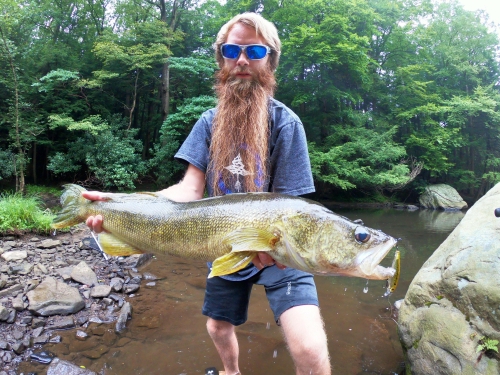
“In the summer months I really spend more time in the kayak because I can cover a lot more water than when I am wading. I really enjoy targeting the big walleye when the water temperatures are in the high 70s and low 80s,” he says.
Now the key to how he is fishing is to down size, down size, down size…
“The 3DS Minnow in the smaller size or the Pin’s Minnow offer the perfect size baits to mimic the size baitfish we have in the local streams and rivers in Pennsylvania where I fish.”
Rese also adds that color is not too important but stick to something that looks more natural such as Peanut Bunker, Baby Bass, or Brown Trout.
“Small bait fish are very translucent, so you want that clearer color that looks like the water and matches the bottom colors as well,” Rese suggests.
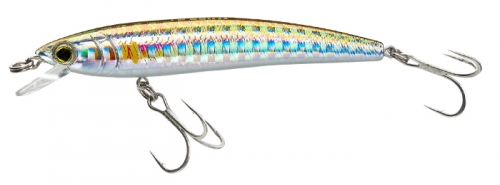
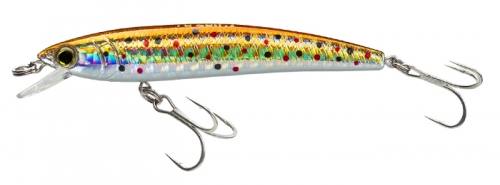
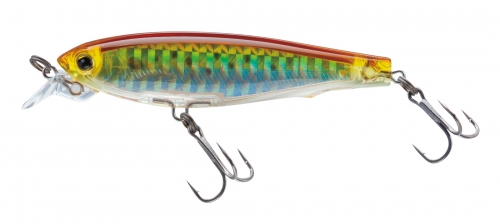
“When I am fishing the best time is post-frontal and a lot of sunshine in the sky. This causes bait fishing to swim around a lot more which will attract aggressive fish,” says Rese.
Throw The Knuckle For A Great Change-Up- by Mark Maule
With August rapidly approaching, many larger northern pike have retreated to deep water weeds, deeper rock piles, or roam the basin in some cases chasing schools of baitfish. During this time, many anglers put away their northern pike gear because it can be more challenging to catch bigger fish than it is during the spring and fall seasons. However, if you can find the fish, they can be caught. One of my favorite lures to fish large northern pike during late July and throughout August is the Yo-Zuri 3DB Knuckle Bait.
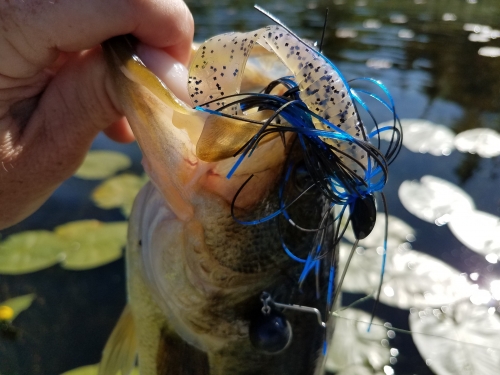
At 1/4, 1/2, and 5/8 oz. the Yo-Zuri 3DB Knuckle Bait can effectively be fished throughout the water column. The 1/4 oz. Knuckle is a perfect choice when fishing in water up to about 10’ above downed wood, right at the edge of weeds that drop into deeper water, or off of long points. The 1/2 oz. and 5/8 oz. Knuckle Baits are a great choice when fishing in water from 10-20’ deep while working the edge of weedlines and sharp drops or humps. The 5/8 oz. Knuckle Bait can also be a great option when pursuing large fish in the 15-25’ range over basins when they are chasing schools of baitfish.

Two of my favorite colors regardless of how deep I am fishing are the Golden Shiner and Tennessee Shad. The Golden Shiner 3DB Knuckle Bait is perfect for tannic or dirty water and the Tennessee Shad is an excellent choice for clear water conditions where the sun is high in the sky. With each pattern, it is recommended to use some kind of trailer. Normally, I go with a 4” or 5” plastic grub that emulates baitfish that are in the system. So, for example, when fishing the Golden Shiner Knuckle Bait, I might choose a grub that has some chartreuse and orange flecks in it because it mimics a bluegill that northern pike will be feeding on in weeds. When using the Tennessee Shad Knuckle Bait, I might go with a pearl or white grub to try for basin fish because these colors look like tullibees that northern pike might be chasing.
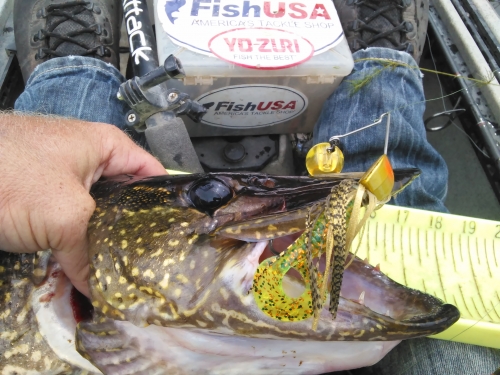
Fishing for large northern pike during summer can be daunting at times, but they can still be caught with relative frequency. Throwing the Knuckle as a change-up to patterns used in spring and fall can be a terrific way to keep you on the numbers and good-sized fish.
Chasin the Wester Stripers- by Joseph Tutelian
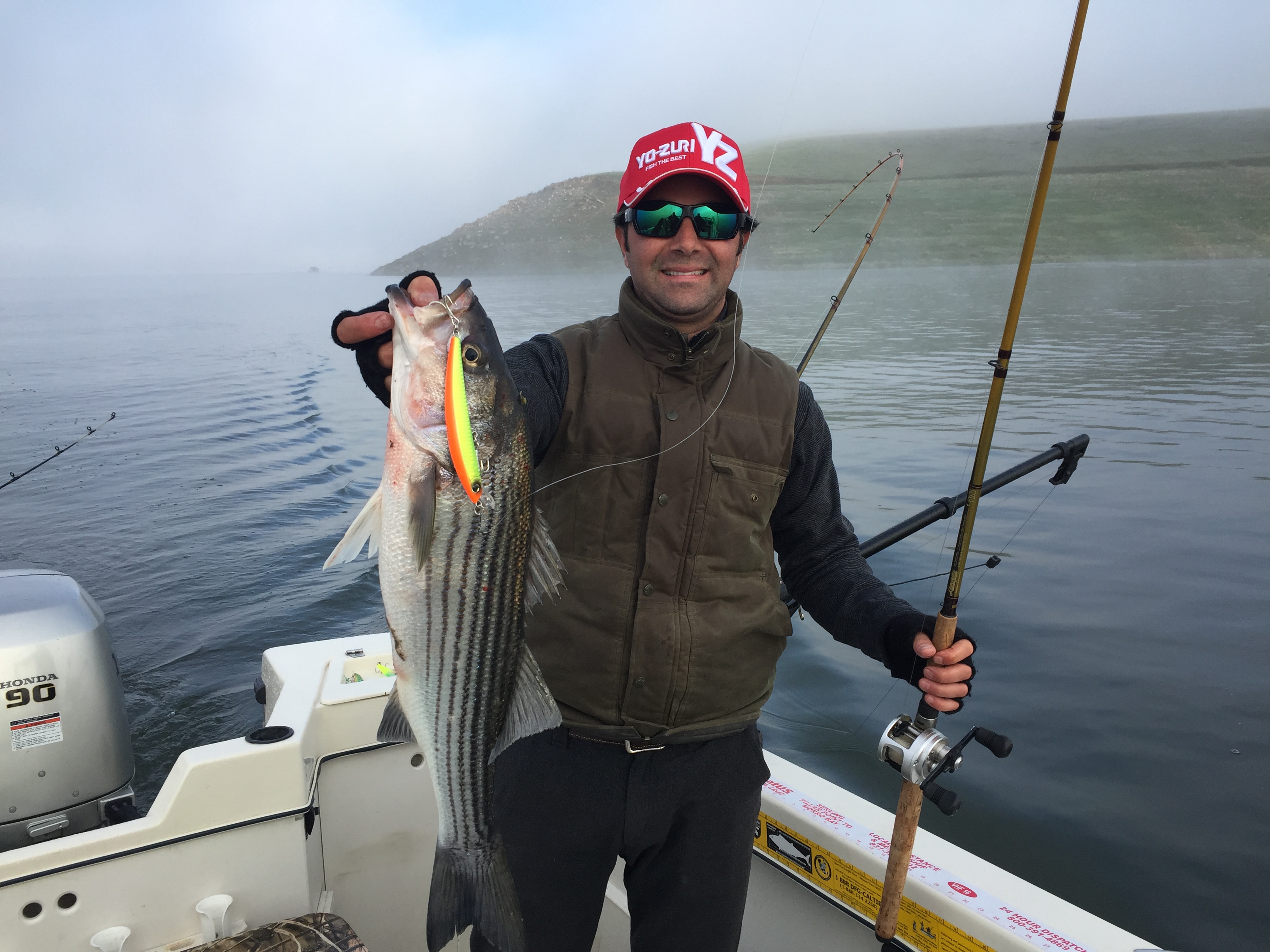
Rod: Cousins casting rod (SSW 79M-T) 7’9, 12-20 lb, extra fast tip; and Lamiglas Mark Wilson Striper Trolling rod (XCC 795) 7’9, 12-25 lb.
Reel: Diawa reel with a line counter when fishing with multiple people this helps coordinate each others distances behind the boat.
Fishing Line and Hardware: Yo-Zuri TopKnot Mainline fluorocarbon in 20lb test with a Owner 79 lb Hyper Crosslock Snap (a snap-swivel will rob the lure of its action)
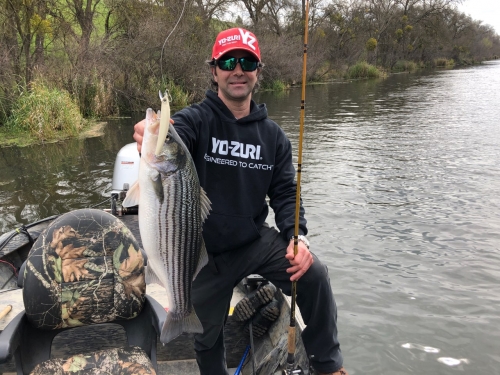
Lures: Yo-Zuri Crystal Minnow 5 1/4″ in bone white, pink, chartreuse, blue, and others. This lure has a very tight fast wiggle and dives a few feet deeper than the Yo-Zuri Hydro Minnow LC. The Hydro LC is just as effective as the Crystal Minnow, however I use the Hydro LC when trolling in shallower water because it dives from 3-6 feet deep depending on how far behind the boat you are trolling it (130 ft versus 200 ft.) The Hydro LC also has a larger profile than the Crystal Minnow; I like to downsize the lure when the bite is tough. In the Crystal Minnow I prefer the colors: Bone, Florescent Pink, and Chartreuse. The Hydro Minnow LC I always have the best luck on Bone or Purple Black.
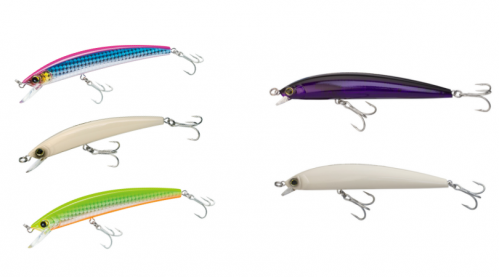
Fishing Technique/Application: Water in the river ranges from 48 degrees (winter/early spring) to 62 degrees (summer/fall, or further downriver). When I am fishing all of the above listed lures, I am trolling them upriver or downriver at speeds ranging from 2.5-3.5 mph, with my lure approximately 120-200 ft behind the boat depending on the depth of the hole I am trolling. Depending on what depth in the water column I am trying to fish, I will let out less line (i.e. 120 feet) to achieve a shallower depth, and more line (i.e. 200 feet) to achieve a deeper depth. Remember, you can also fish shallower or deeper in the water column by changing from the Crystal Minnow to the Hydro Minnow to the LC Minnow.
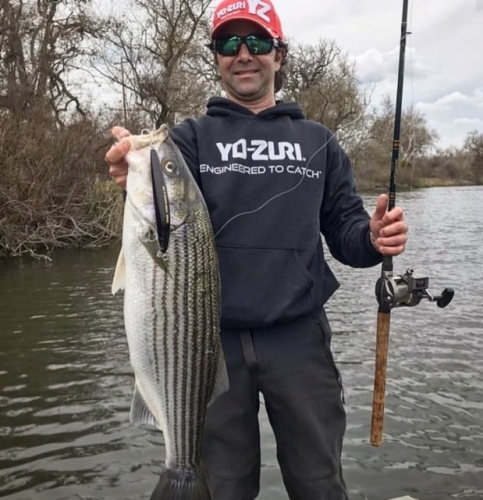
Another cool tip to note; to trigger reaction bites is to make the lures swim up or down in the water column by increasing or decreasing your troll speed. When using any floating lure, you can get it to swim down (or dive) by increasing your speed, and also get it to swim up by slowing down your troll speed. Sometimes doing this or trolling in a Z-pattern can trigger bites!!!
Post Spawn Big Bass “Wake” Up!- Mark Maule
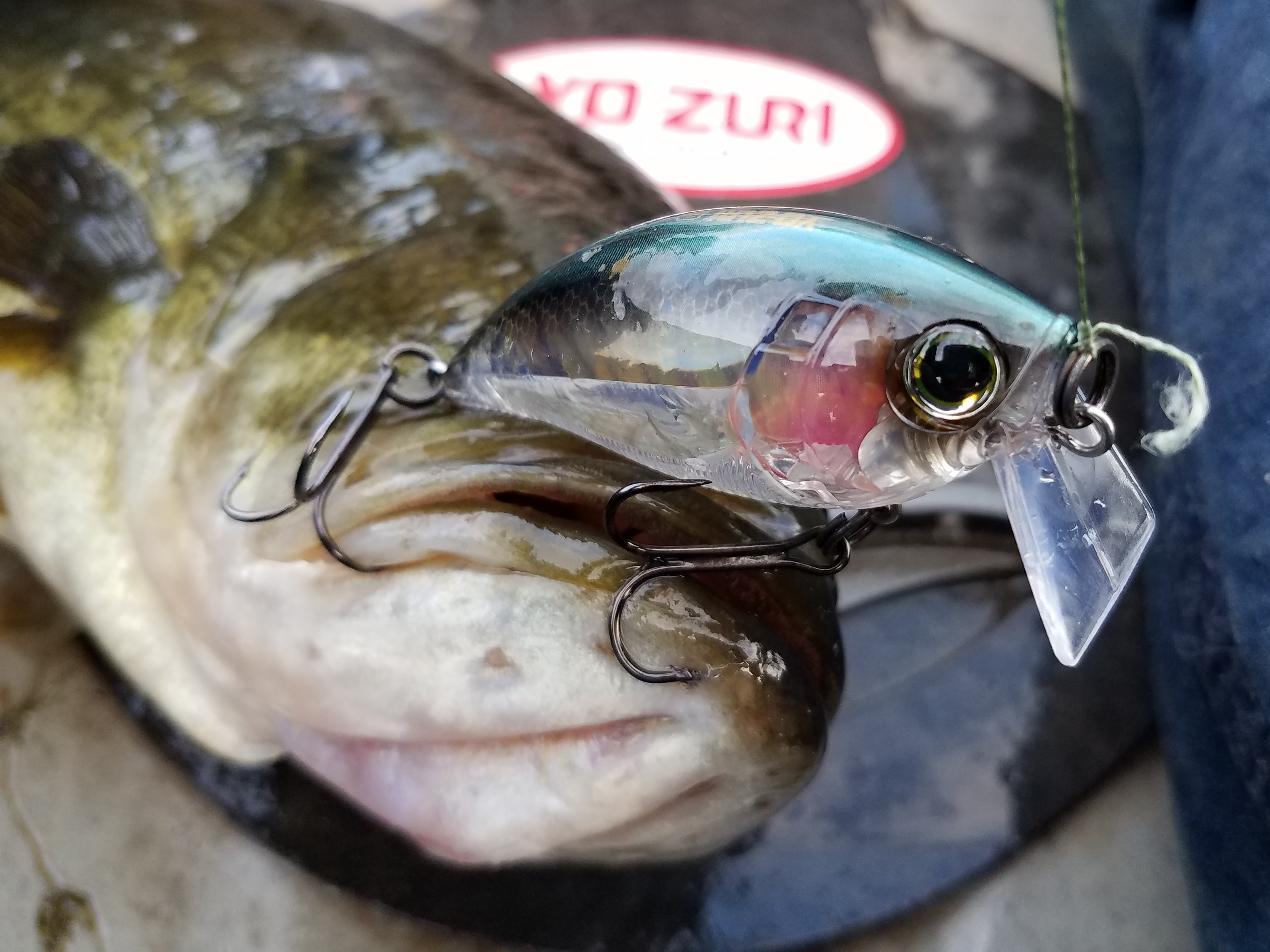 Have you ever had one of those mornings where you just don’t want to wake up or get out of bed? Of course! We have all had that experience at some time. During the immediate post spawn period, it can seem like the big bass in a lake have one of those mornings for an entire week. However, even when they are lethargic and not feeding heavily as can be the case in the immediate post spawn period, there are still some opportunities to “Wake” them up and get them to bite.
Have you ever had one of those mornings where you just don’t want to wake up or get out of bed? Of course! We have all had that experience at some time. During the immediate post spawn period, it can seem like the big bass in a lake have one of those mornings for an entire week. However, even when they are lethargic and not feeding heavily as can be the case in the immediate post spawn period, there are still some opportunities to “Wake” them up and get them to bite.
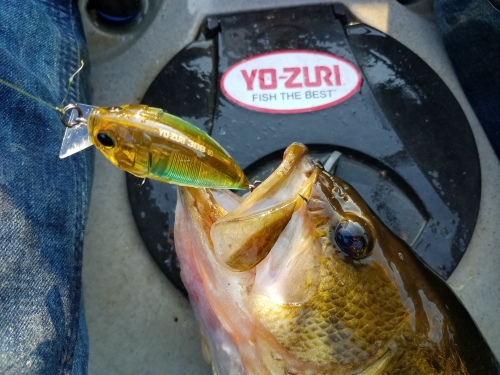
One of my favorite lures during this transitional phase is the Yo-Zuri 3DB Wake Bait. At 2.75”, this lure has a solid tight wobbling motion. Like other Yo-Zuri products, the 3DB Wake Bait has a rattle that can draw fish in from a long way off. The Yo-Zuri 3DB Wake Bait can be fished right beneath the surface leaving disrupted water behind it as it is reeled in, or it can be fished effectively up to about 1.5’ below the top of the water.
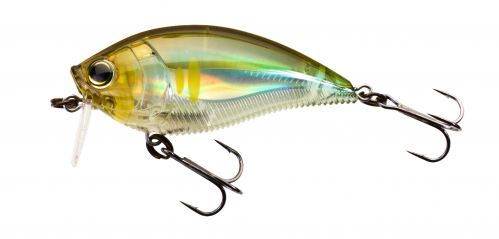
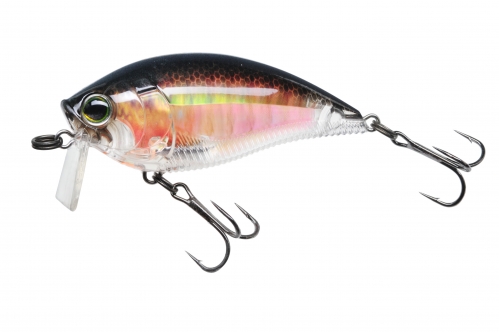
Using the 3DB Wake Bait during the post spawn can be especially effective early in the morning or late in the day when the sun is lower. Add some wind up to about 5 mph hour, and this lure can be cranked for bass on any given lake. The Prism Ayu is one of my favorite colors during the immediate post spawn for bass because it emulates the baitfish that the fish are feeding on or will be feeding on soon and elicits reaction strikes. Prism Ayu is a great pattern choice to use in clear water especially as bass will come to the surface from 15’ down to engulf this lure as the cadence is changed with every crank of the reel handle. Generally speaking, I start in 3-6’ of water when using the 3DB Wake Bait, and then work my way out deeper if necessary. Another alternative in cloudy conditions during the Bluegill spawn is the same size of Yo-Zuri Wakebait in the 3DR series is the Real Bluegill.
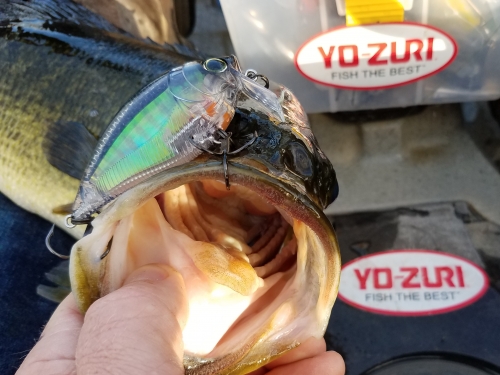
So if you are facing some cranky bass right after the post spawn that don’t seem to want to move, much less eat a bait, “Wake” them up with the Yo-Zuri 3B Wake Bait.
Western Striper Success!!! -by Manuel Saldana Jr.
The Striper fishing out in the west coast is on FIRE!!!! Want to increase your chances at have a day on the water that will make memories for a lifetime, here is some helpful tips on what I prefer to do and the set up I rely on!
My rod and reel choices are the following:
Rod is a 7’6″ heavy in power with a fast action tip.
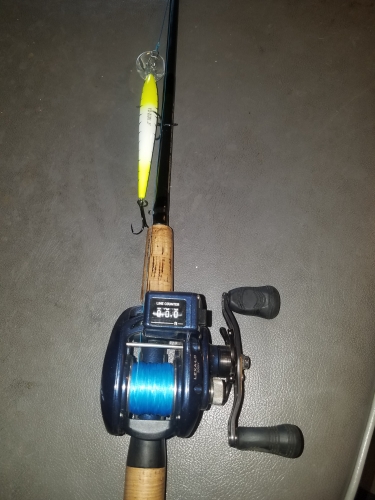
The reel is a 300 size conventional reel with a line counter. Line counters are a must because this helps us out as a guide to know how far everyone’s line or lures are.I prefer to spool it up with 30lb Yo-Zuri SuperBraid in the Blue color pattern.
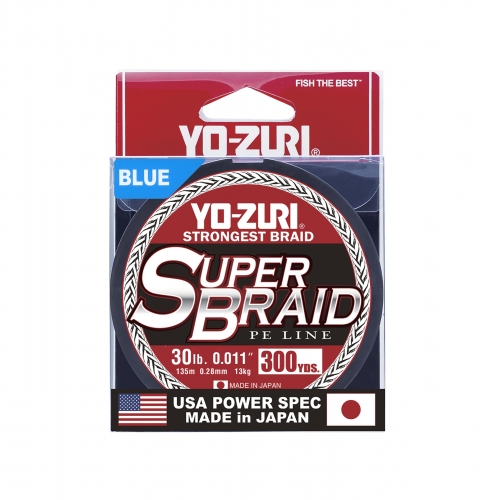
Weather conditions that are most favorable are Mid-March thru early summer, but this year throughout April and May the weather was normal morning temp 45 degrees and a high temp of 74 degrees throughout the day but the main issue we have faced is the water temperatures of 50 to 52 degrees. Our normal water temperatures are 55 degrees in mid-March and approximately 60 degrees in mid-April. It took a while to figure it out, we had Spring weather temperatures but winter water temperatures due to all the snowpack in the Sierra’s.
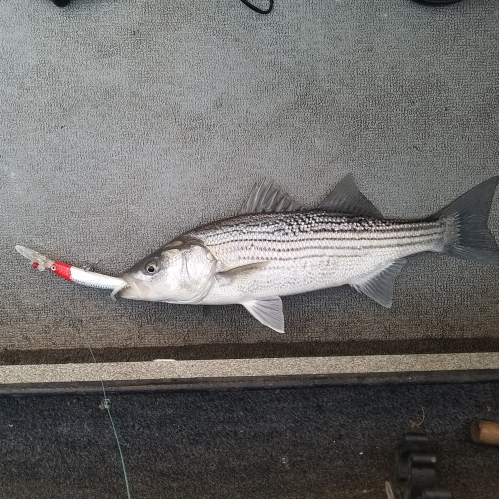
Most effective techniques were drifting upstream with deep diving floating Yo-Zuri Crystal 3D Minnow lures or the Yo-Zuri Crystal Minnow Deep Diver Walleye series lure. I recommend trolling upstream at 3 to 4 MPH. Trolling at higher speeds make these stripers react to our lures, and with the colder water temps you had to get the lures right in their face because they were lethargic.
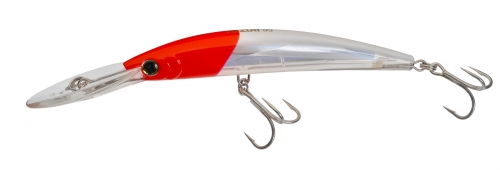
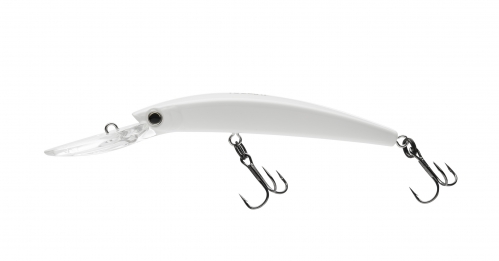
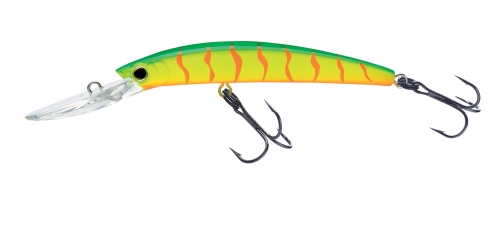
Hot baits were the standard deep diving floating Yo-Zuri Crystal 3D Minnow in Redhead/White body. This lure, for many years, has been the ‘go-to’ it comes to catching stripers. In the freshwater Deep Diver Crystal Minnow Walleye series lures the solid white has been hot for us. The bite is so good that it is almost like the stripers have never seen this lure before and they flat out couldn’t resist it! I believe the very tight wiggle the Crystal Minnow action has in the water mimics most live bait in many bodies of water such as Shad, or Pike Minnow. Another hot suggestion is the Deep Diver Walleye Series in the Hot Tiger color.
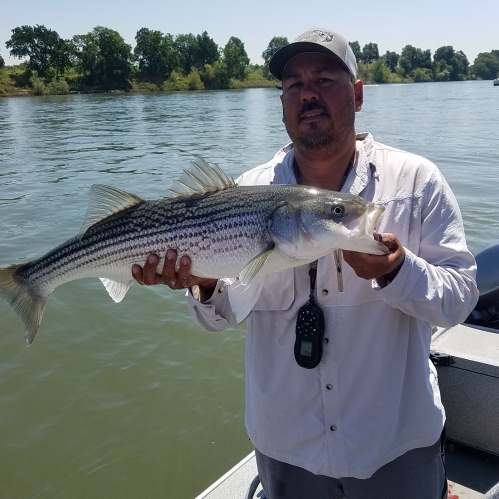
One tip I can pass on to anglers that will help them be successful is to remove the split ring that comes in the package tie a size 54 duo snap lock to your braid the attach it directly to the bait. This helps the lure run true, plus it makes easier to change out your lures as well. Also, make sure you add a trailer worm to your trailing center hook; it helps the lure get an even tighter wiggle.
It’s Time to go Drop-Shotting! By Martha Goodfellow
It’s hard to believe it’s been ten years since my friend taught me how to drop-shot. Lessons started in his garage, over his boat. A lot of plastics and hooks, but only one line to choose. He shared his favorite choice of line to use for drop-shotting. It is the only line I’ll use on my drop-shot. I am speaking of Yo-Zuri Hybrid Line.
I am amazed at how well the Hybrid Line works. When you look at how it is made, you can better understand the qualities that give the line its strength and sensitivity, both important for fishing. “Yo-Zuri’s Hybrid Line is a co-polymer consisting of fluorocarbon and nylon making it abrasion resistant and has the sensitivity of fluorocarbon and the flexibility and stretch of nylon.”
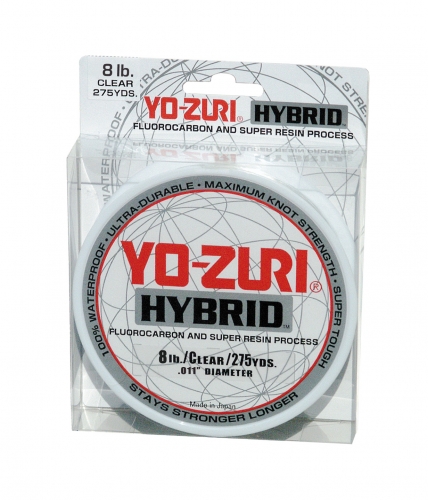
For choosing which pound test to use for drop-shotting, I fish with eight pound test Yo-Zuri Hybrid Line. In our area of South Carolina, we have some pretty clear lakes and the eight pound test works great. As for being able to land big fish, my friend and teacher, caught a nice eight pound bass, on eight pound test Yo-Zuri Hybrid Line. Yes, the line works!
Drop-Shotting is one of my favorite techniques for catching bass. I love seeing a school of bass on my electronics and dropping my bait down below the school, watching the bass chase the bait down, and then hooking up.
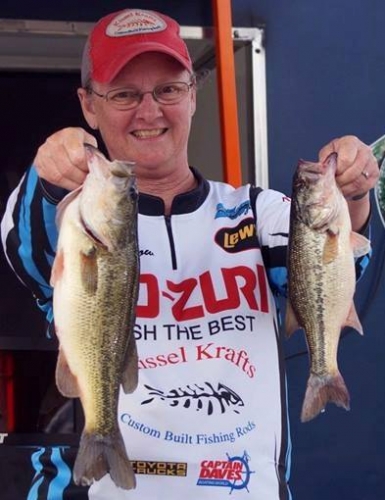
The Drop-Shot works well on clearer bodies of water. As for time of year, summer and winter, when the bass are suspended in deeper water, often relating to schools of baitfish are great for the drop-shot.
Where to start looking for that school of bass. Check out creek channel swings and big, long, tapering points that run way out to the channel. If you have baitfish in the area, you are in the right spot.
Snappin’ Skinny Water Panfish- by Mark Maule
As the water warms to 60 Degrees in the spring, we as anglers often times find ourselves faced with the great dilemma of what kind of fish we should chase. During this time of year many fishing seasons are opening and a lot of attention is rightfully given to northern pike, walleyes, muskies, and bass. While these are all terrific species to pursue, don’t forget about panfish. It is in the late spring when big bull bluegills and colossal crappies begin roaming the shallows looking for forage and preparing themselves for their respective spawns.
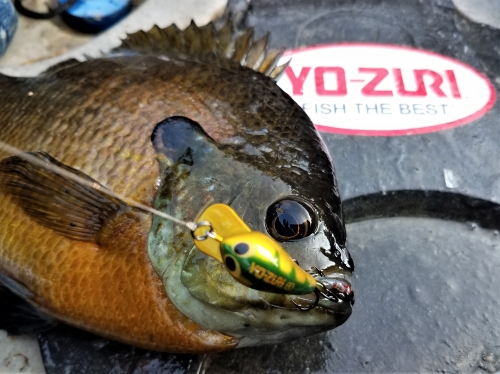
One of my favorite lures during the pre-spawn for crappies and bluegills is the Yo-Zuri Snap Bean. It is arguably one of the most versatile panfish lures that I use because it can be casted, trolled, or used under a bobber. During the late spring when I am fishing the dark shallow bays on the north end of a lake as bluegills and crappies begin moving in, I will use a very specific cadence (explained in the upcoming paragraphs) in order to ensure that I not only catch fish, but that I also avoid as many snags in the 1-2’ of water that I am fishing.
When using the Snap Bean, I usually recommend 6 lb Yo-Zuri Hybrid line as it is inevitable that if you have panfish in your system, then there will be a time when a bass or northern will munch your bait. Generally speaking, I tip the Snap Bean treble with some kind of plastic grub that is less than an inch long. The next item that I choose for this set up is a clip on bobber which I place 6-12” above the Snap Bean depending on the depth of the water. If it is only 12” deep, then go with 6” for the bobber placement. If the water is 2’ deep, then go with 12” for the bobber placement.

After you are rigged and ready to go, the next piece of the puzzle is probably the most critical to consider when fishing with the Snap Bean. Cast the bobber out and then pause for 3-5 seconds as the Snap Bean sinks slowly. Many times bluegills and crappies will grab the lure while it is in this sinking motion. If no fish bites in the first 3-5 seconds, then begin reeling SLOW. When I say SLOW, I mean slow to the point that you have your rod tip high in the air and you reel the bobber just slow enough so that it stays afloat skimming the top of the water throughout the entire retrieve. If the bobber goes beneath the surface, then you are reeling too fast. This cadence allows you to see your bobber, but because you have a constant slight tension on the line, you are also able to feel bites when reeling it up. When you can feel the bite, you may be more apt to hook up more times than if just waiting for a fish to bite a bait under a relatively stationary bobber.
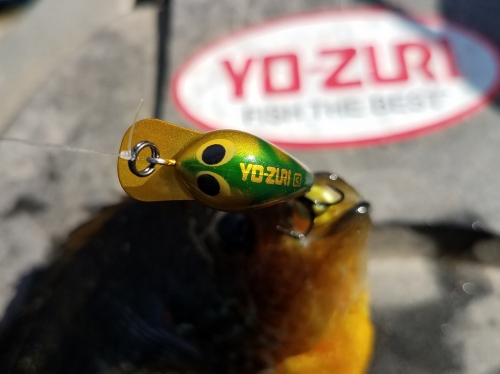
While there are a multitude of ways to catch bluegills and crappies in spring, it is arguable that the Yo-Zuri Snap Bean is one of the most effective and enjoyable lures for catching large fish. It is a morsel that big bulls and slabs just can’t pass up as it cruises through the shallows on the end of your line. If you want to catch more panfish this spring, stock up on the assortment of Yo-Zuri Snap Bean colors available today.
